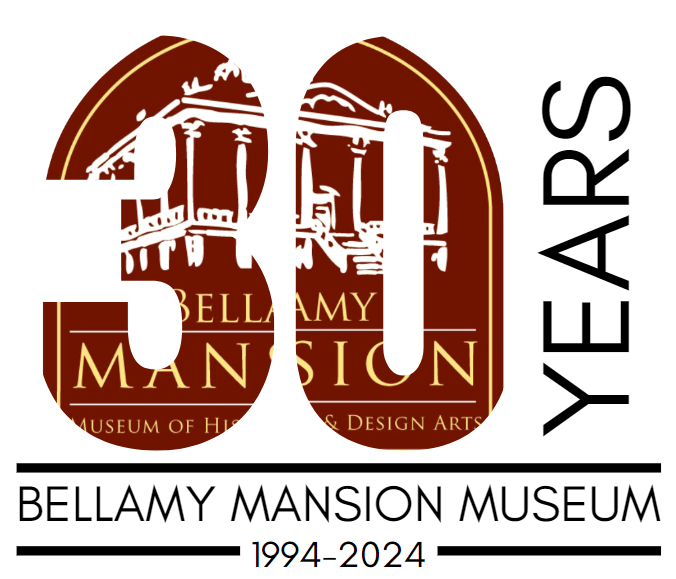2. Slave Quarters, and Privies
Slave Quarters
Workers completed the slave quarters first, in 1859, to house some of the enslaved workers who constructed the mansion between 1859-1861. The building combined several purposes, including a laundry room, privies, and sleeping chambers. It is a rare surviving example of a Southeast urban slave quarters, and one of the only in the U.S. that is completely restored and open to the public.
Three adult women and five girls resided in the slave quarters from 1861-1862. While we believe the cook’s, Sarah, room was on the first floor, Rosella the laundress, and Joan the nanny, slept upstairs with the five enslaved girls—one of whom was Mary Ann, a 14-year-old, Caroline was Joan’s 7-year-old daughter. Three other slave girls including Charlotte and Harriett Potter—Rosella’s daughters—along with a one-year-old unnamed girl, also lived on property. The privies include two child-sized seats and three adult sized. The one closest to the parking lot was likely used by male Bellamys and male guests while the other was used by male and female slaves alike.
During the 19th century the yard resembled a barn yard. The poultry shed stood where the bathrooms do today. Enslaved workers tended the animals and carriages, the laundry, and kitchen garden making this a beehive of activity before the Civil War. Near the fig tree, the brick-lined well, covered by a wooden lid, held drinking water provided by a nearby fresh spring. The 6,500-gallon cistern, located in the yard, collected and stored rainwater via gutters for bathing and cleaning. The coal chute, circular lid with holes at the base of the stairs, extends underground and held around 16 tons of coal. The coal provided heat in the mansion’s most public rooms and fuel for the kitchen stove.
Workers completed the slave quarters first, in 1859, to house some of the enslaved workers who constructed the mansion between 1859-1861. The building combined several purposes, including a laundry room, privies, and sleeping chambers. It is a rare surviving example of a Southeast urban slave quarters, and one of the only in the U.S. that is completely restored and open to the public.
Three adult women and five girls resided in the slave quarters from 1861-1862. While we believe the cook’s, Sarah, room was on the first floor, Rosella the laundress, and Joan the nanny, slept upstairs with the five enslaved girls—one of whom was Mary Ann, a 14-year-old, Caroline was Joan’s 7-year-old daughter. Three other slave girls including Charlotte and Harriett Potter—Rosella’s daughters—along with a one-year-old unnamed girl, also lived on property. The privies include two child-sized seats and three adult sized. The one closest to the parking lot was likely used by male Bellamys and male guests while the other was used by male and female slaves alike.
During the 19th century the yard resembled a barn yard. The poultry shed stood where the bathrooms do today. Enslaved workers tended the animals and carriages, the laundry, and kitchen garden making this a beehive of activity before the Civil War. Near the fig tree, the brick-lined well, covered by a wooden lid, held drinking water provided by a nearby fresh spring. The 6,500-gallon cistern, located in the yard, collected and stored rainwater via gutters for bathing and cleaning. The coal chute, circular lid with holes at the base of the stairs, extends underground and held around 16 tons of coal. The coal provided heat in the mansion’s most public rooms and fuel for the kitchen stove.




